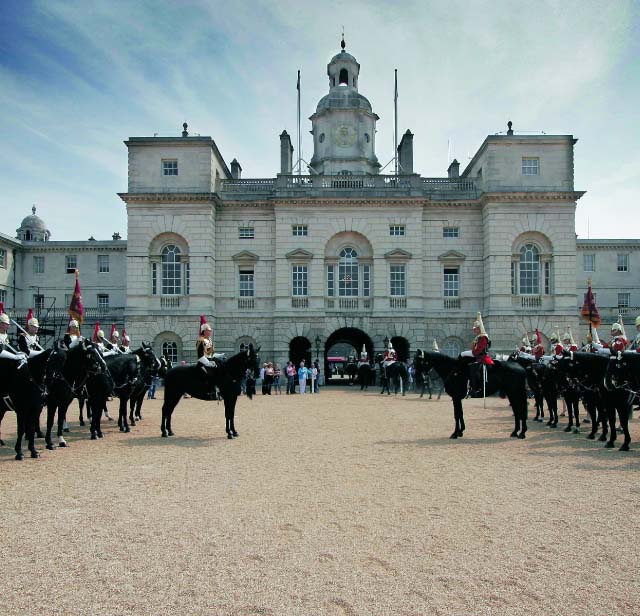Household Cavalry Museum
The Household Cavalry Museum is a living museum about real soldiers doing a real job in a famous place, the history and traditions that bring them there and the impressive battle honours, remarkable history and exploits of their predecessors as well as their modern ceremonial and combat role.
Through a glazed partition visitors can see troopers working with their horses in the mid 18th century stables, preparing for sentry duty and through AV and interactive presentations hear first hand accounts of the rigorous training, which uniquely equips them for their ceremonial role as Her Majesty The Queen’s mounted body guard in the UK and their combat role as an armoured reconnaissance regiment worldwide.
The experience features compelling personal stories and eye catching rare objects – many on view for the very first time - elegantly showcased in magnificent mid eighteenth century vaulted stables.
The Museum lies within Horse Guards at Whitehall in central London, one of the city’s most iconic and historic landmarks and the official entrance to the Royal Residences. It is the Headquarters of The Household Division, where the Household Cavalry provides The Queen’s Life Guard in daily ceremonies broadly unchanged since the days of Charles II over 350 years ago.
Fixed touchscreen interactive displays answer visitor’s questions including the latest installation, which describes the medal collection of Squadron Corporal Major Mick Flynn , who until his retirement in July 2014 was Britain’s most decorated serving soldier and also describes all the campaign theatres where the Household Cavalry Regiment has been engaged since WWII along with the medals from those campaigns.
The Museum also features recently installed displays on the modern Armoured Reconnaissance Regiment (HCR) in combat in Afghanistan and a magnificent set piece depicting the capture of the French Eagle of the 105th Regiment of the Line at the Battle of Waterloo (1815) by the Royals.
Museum profits support our soldiers and their families, who have been adversely affected by recent operational deployments.
The Changing of the Queen’s Life Guard (daily at 11am: Sundays 10am), the Daily Inspection (4 pm) and mounted sentry changes at Horse Guards hourly from 10am until 4pm are well worth taking in on a visit. Uniquely British pageantry at its best.

